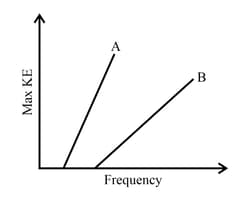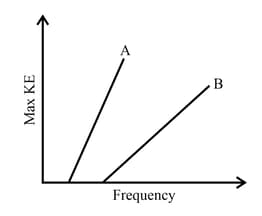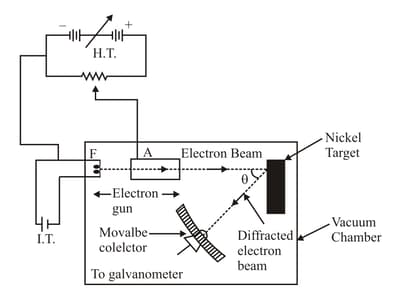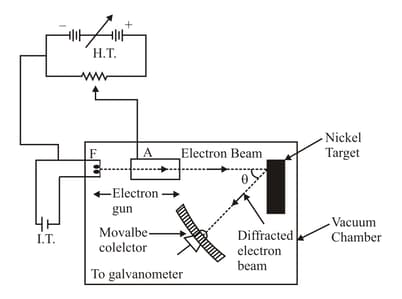Embibe Experts Solutions for Chapter: Dual Nature of Radiation and Matter, Exercise 1: Kerala Board-2020
Embibe Experts Physics Solutions for Exercise - Embibe Experts Solutions for Chapter: Dual Nature of Radiation and Matter, Exercise 1: Kerala Board-2020
Attempt the free practice questions on Chapter 11: Dual Nature of Radiation and Matter, Exercise 1: Kerala Board-2020 with hints and solutions to strengthen your understanding. EMBIBE CHAPTER WISE PREVIOUS YEAR PAPERS FOR PHYSICS solutions are prepared by Experienced Embibe Experts.
Questions from Embibe Experts Solutions for Chapter: Dual Nature of Radiation and Matter, Exercise 1: Kerala Board-2020 with Hints & Solutions
The given graph shows the variation of KE with frequency of incident radiations for two surfaces and .

Which of the two metals has greater work function? For which of the metals will be stopping potential be more for the same frequency of incident radiation?
The given graph shows the variation of KE with frequency of incident radiations for two surfaces and .

The work function of caesium metal is . What light of frequency incident on the metal surface, what is the maximum KE of the photoelectrons and stopping potential?
If is Planck's constant, the momentum of a photon of wavelength is
The schematic diagram of an experiment of an experimental setup to study the wave nature of electron is shown below:

Identify the experiment.
The schematic diagram of an experiment of an experimental setup to study the wave nature of electron is shown below:

Explain how this experiment verified the wave nature of electrons.
Define work function.
The work function of caesium metal is . When light of frequency incident on the metal surface, photoemission of electrons occurs.
Calculate the maximum kinetic energy of the emitted electrons.
The work function of caesium metal is . When light of frequency incident on the metal surface, photoemission of electrons occurs.
Calculate the stopping potential.
